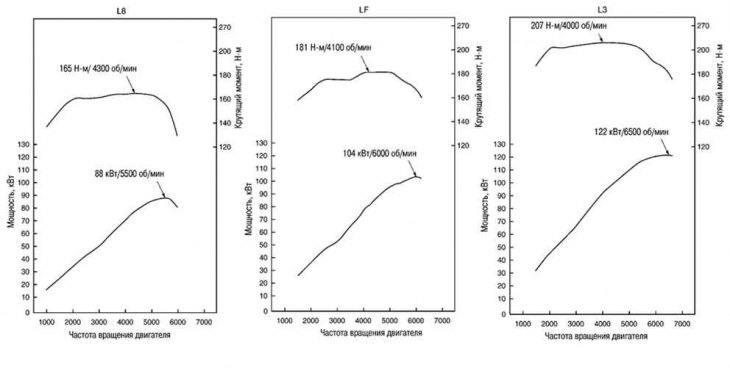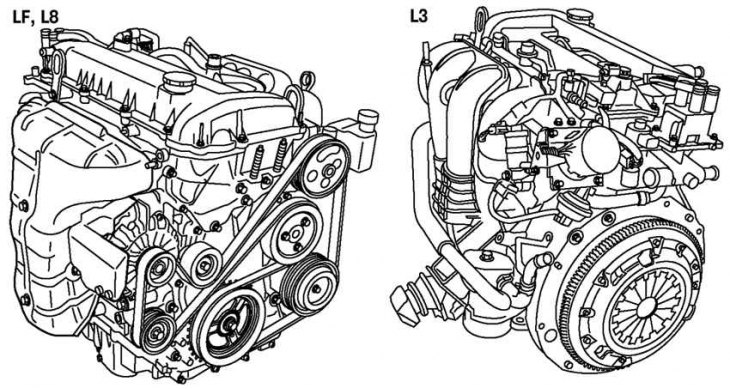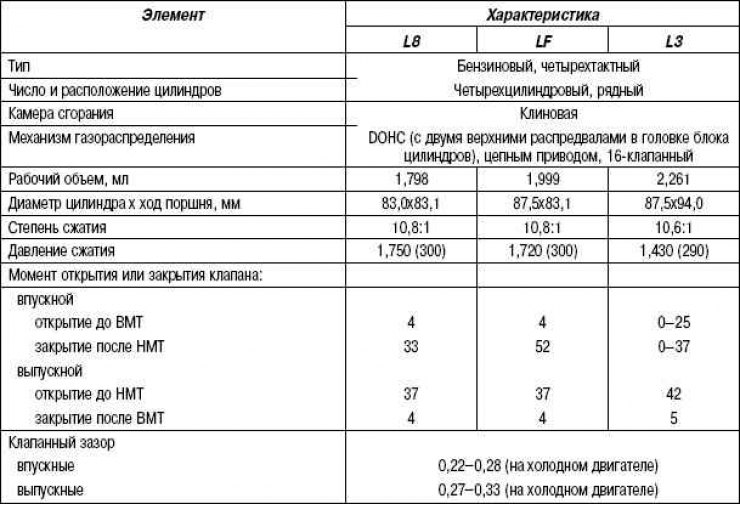
Pic. 2.1. Diagram of the dynamic characteristics of Mazda 6 car engines
The impeller, in turn, spins the second impeller by means of a shaft, which pumps air into the compressor and delivers it to the combustion chamber. The heated air passing through the turbocharger is cooled in the intake air cooler. It is cooling that provides a greater increase in power (pic. 2.1).
Mazda has made a number of technical improvements to the design and technical components of the new engines.
For example, on the engines of the L3 model, a mechanism for changing the valve timing is used. In order to reduce the overall weight of the car, the cylinder block on new engines is made of aluminum alloy, just like the cylinder head.
Major changes have been made to the design and mechanical part of the engines in order to reduce vibration and noise levels. So, for example, on the engines of the L3 model, a cassette-type balancing block is used. All engines are now equipped with a silent timing chain. The cylinder block has a long piston skirt and an integrated main bearing cap. In addition, all engines use a crankshaft pulley with a torsional vibration damper and a pendulum type suspension.
Simplified, in order to improve maintainability, the contour of the auxiliary drive belt. One drive belt is now used for all engine accessories. The tension of the drive belt is adjusted by the automatic tensioner. Engine front cover has a maintenance hole (to unlock the chain adjustment ratchet and lock the tensioner arm).
As a power plant in Mazda 6 cars, 4-cylinder engines are used, in which the cylinders are arranged in one row. From below, the engine is closed by a sump that forms a crankcase, which is also a reservoir for oil, which is necessary for lubrication, cooling and protection of engine parts from wear.
All three engines are 16-valve, with four valves per cylinder. The valves are actuated by two overhead camshafts via poppet followers.
Engine lubrication is provided by an oil pump mounted on the end side of the crankcase and driven by the crankshaft. The oil sucked from the oil pan is fed through holes and channels to the bearings of the crankshaft and camshaft and to the working surfaces of the cylinders.
The preparation and supply of the fuel-air mixture is carried out by an electronic engine control system that does not require maintenance.

Pic. 2.2. General view of Mazda 6 car engines
Table 2.1. Engine Specifications

